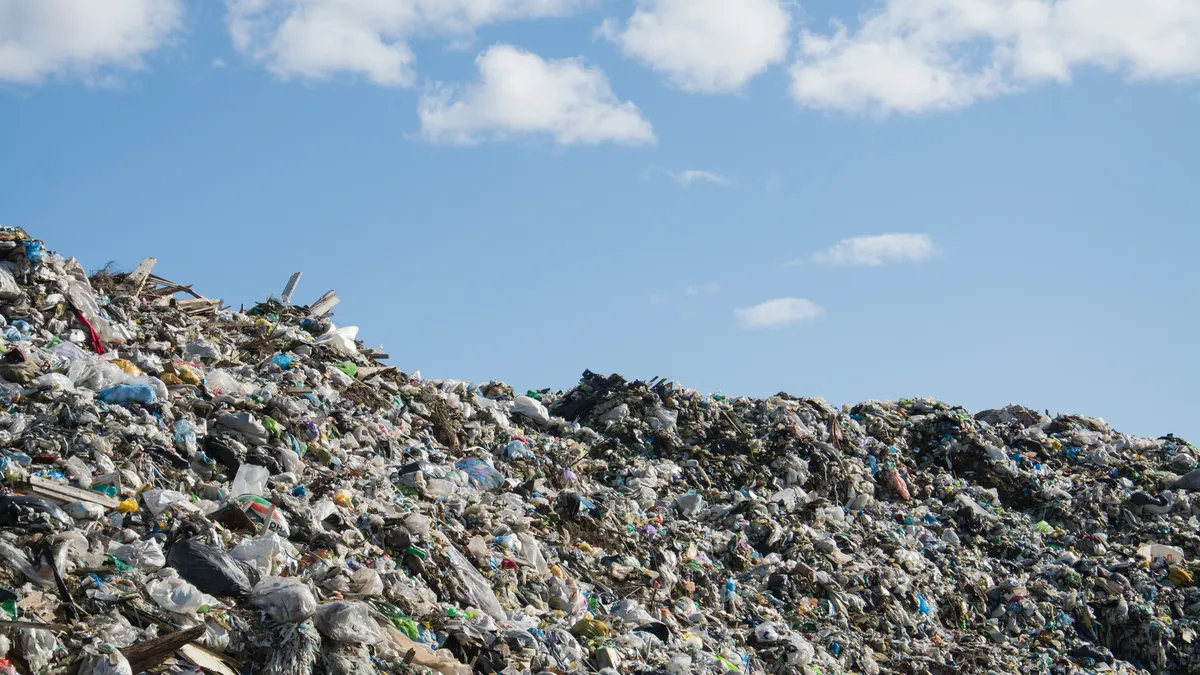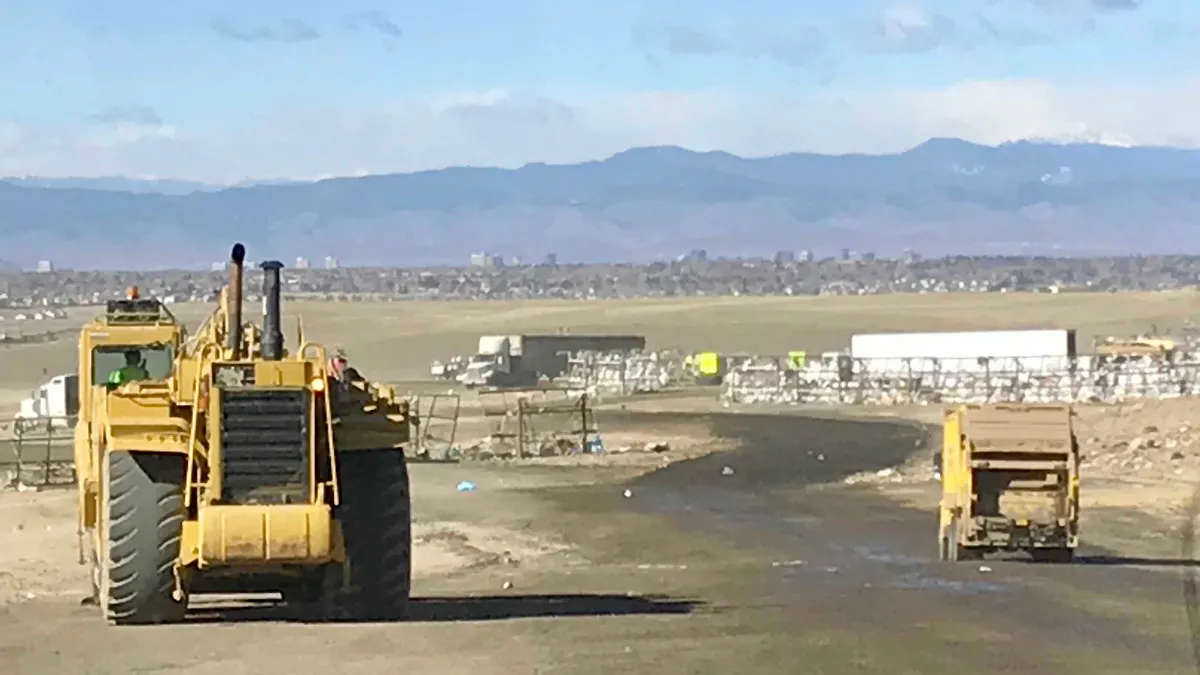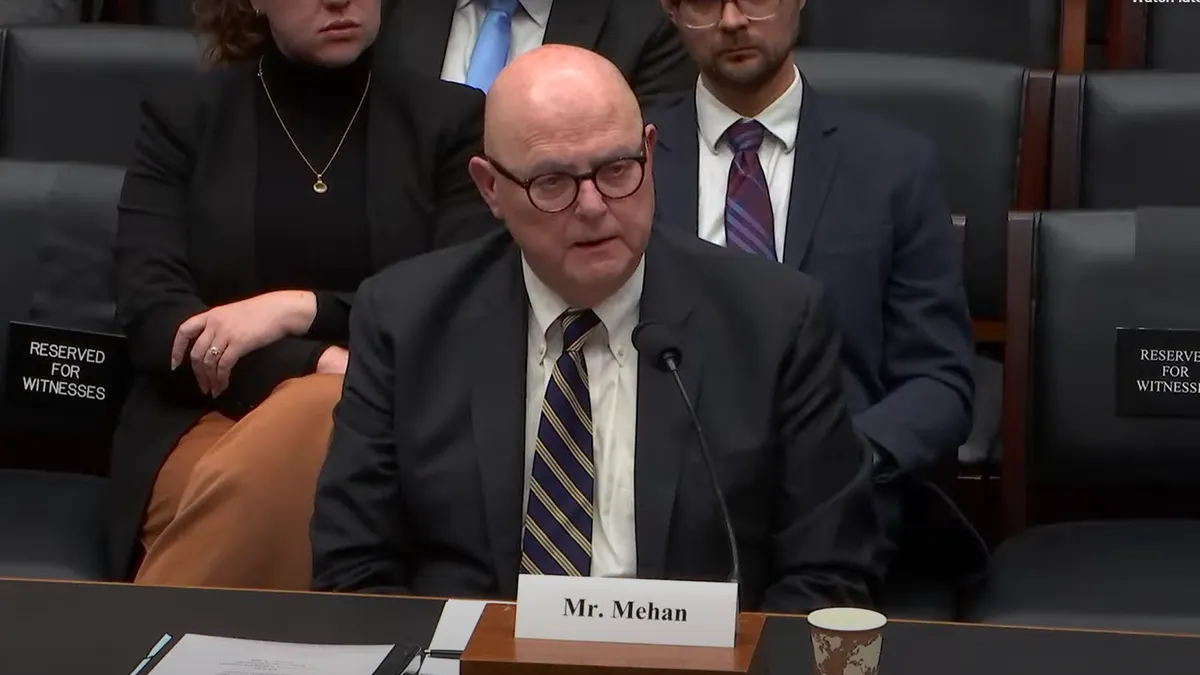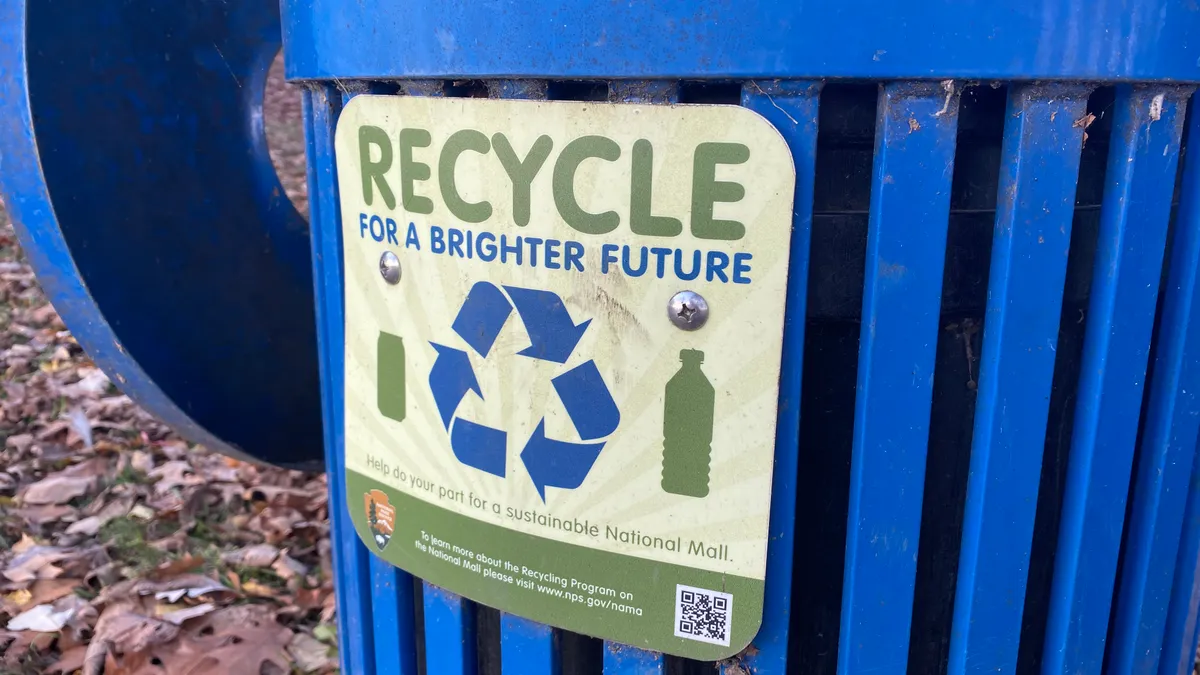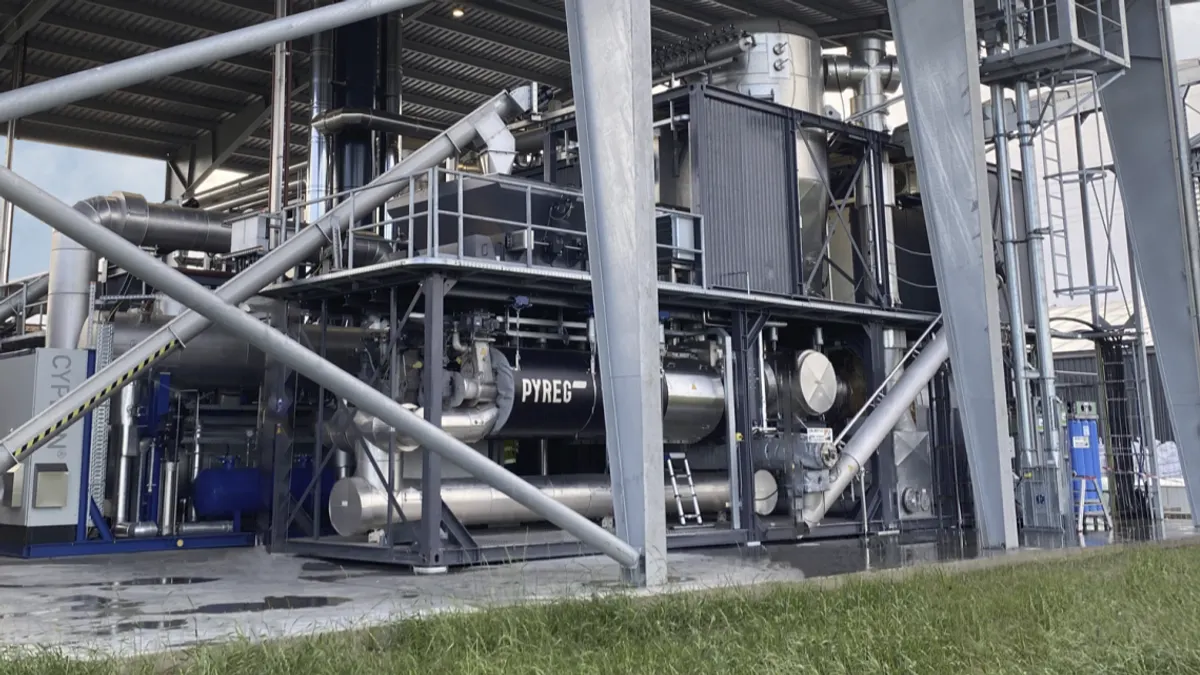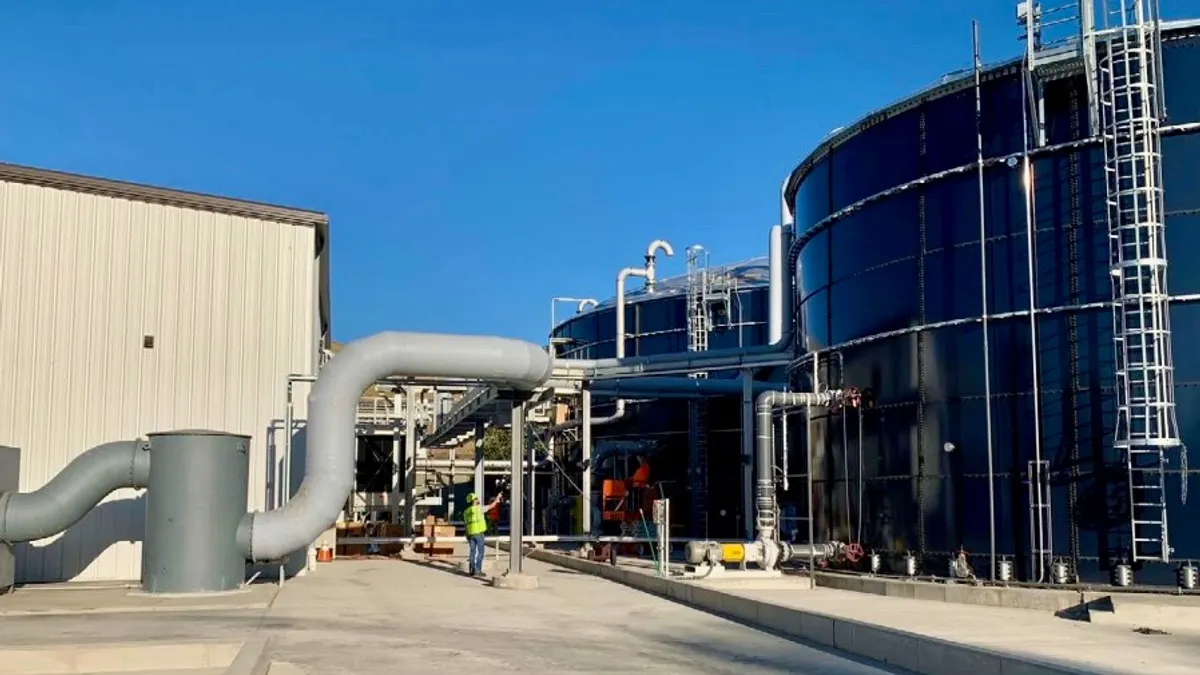The United States has committed to reducing methane emissions 30% by 2030. Researchers from Carbon Mapper and RMI are encouraging landfill operators to join the effort.
Landfills are a major source of methane, a more potent greenhouse gas than CO2, and states like Washington and California have implemented stricter laws in recent years to curb such emissions. Yet some researchers think landfill operators don’t have enough comprehensive information about their own emissions to make effective, long-term changes to their operations.
A report earlier this year called for better air monitoring data, coupled with design and operational upgrades, to help curb the issue. It details available methods for measuring methane at landfills and highlights the importance of state and local programs to divert material away from landfills in the first place. RMI, a nonprofit that identifies energy system improvements for cutting greenhouse gas emissions, and Carbon Mapper, a nonprofit organization that uses satellites to identify major methane emissions sources, led the report.
The researchers consulted with major landfill operators such as Republic Services and WM, as well as government agencies, organizations like the National Waste & Recycling Association and the Global Alliance for Incinerator Alternatives.
The report follows other notable research in recent years about the role of landfills in climate change. A California study from 2020 used NASA data to find that major waste companies are among the state’s “super-emitters.” A national study is in the works.
Ebun Ayandele, senior associate with the Climate Intelligence Program for RMI, and Daniel Cusworth, project scientist at Carbon Mapper, recently spoke about their report, which identifies the waste sector as both a disproportionate contributor to methane emissions but also “a critical partner in mitigating climate change.”
This interview has been edited for length and clarity.
WASTE DIVE: Most landfill operators understand that their facilities play a role in overall global methane emissions. What takeaways can they get from this report on how to address that?
EBUN AYANDELE: Landfills have been in the background of the research sphere and weren’t getting enough attention. What we really wanted to achieve with this report was to document in detail the best management practices at landfills and the number of measures that are being implemented to reduce methane. There are also strategies to prevent material from coming into the landfills in the first place, like food waste reduction and organics management, where we might see an anaerobic digester co-located at a landfill, for example.
DANIEL CUSWORTH: [CarbonMapper] flew over hundreds of thousands of pieces of infrastructure across multiple sectors, including oil and gas landfills, wastewater, livestock, power plants, etc. The technology we use is only sensitive to very large emission sources, and the survey in California showed that the landfill sector was the largest contributor to this category — before even oil and gas and livestock, which are both substantial [sources of methane] in the state.
It’s generally thought that the waste sector is the third-largest contributor to anthropogenic greenhouse gas emissions. That means if we're going to reduce emissions, waste has to be part of that equation. We wanted to answer the question of, how do we come up with a detailed roadmap so that those types of reductions could be realized in the near term?
You consulted with numerous experts when writing this document. You also talked with landfill operators about their experiences. What concerns and questions did operators have that shaped this report and the resulting recommendations?
AYANDELE: One of the concerns that we definitely heard was the impact of laws and of organics bans like California’s [SB 1383] on the bottom line of landfill operations. If there are less organics coming in, that impacts overall volume and tipping fees. If a landfill is capturing landfill gas and injecting gas into the grid, and then you reduce the amount of organic waste that's been coming into the landfill, that may impact revenue.
CUSWORTH: Another concern we heard was the emissions monitoring itself. How do you bring observations into regulatory frameworks or just the operator’s existing workstream? It’s no surprise to anybody that there's not a single measurement technology that is easily deployable, that is cheap, that gives the full answer.
From the Carbon Mapper experience, we're seeing a landfill at a single point in time, so we design our surveys so that we come back and image it multiple times over the course of weeks to months. When you make an observation in a landfill, you need to have the context. What else is happening at that landfill that day? Did you image it on the day that there were construction activities, anomalous weather patterns or high barometric pressure?
AYANDELE: When it comes to this flyover data, there's a concern about how the information could get wrapped up in future regulations and how regulators could use it to take some kind of action. Landfill operators have some nervousness on that front, which makes sense because they don't want to be punished without understanding what the data is telling them and making sure it’s pointing to a persistent issue, as opposed to an anomaly. I think operators just want to get a fair amount of time to address the problem.
Your research includes specific suggestions for how new and existing landfills can curb methane emissions. How are landfill operators tackling these projects, and how are they using emissions monitoring data as part of that?
CUSWORTH: We highlighted the Sunshine Canyon Landfill [in Los Angeles County] in the report as it was a fairly extensive effort that they did based on odor complaints from the community. They refined their plan based on our flyover data to make their gas collection much more efficient … and account for things like sunken wells, construction, etc. That results in those improved emission rates while reducing odor complaints. We’re really eager to continue to engage operators and show how improvements in a landfill can result in fairly substantial reductions in methane emissions.
A lot of our engagement happens outside of the regulatory framework, but it can exist both with the agency and the research level. We talk to the California Air Resources Board and survey landfills in California, and they just want to know what's going on with the landfills that are under their purview. They're not going to go write citations, but they're trying to get a better understanding and share that with operators.
We also talk to the operators directly. Although overall emissions are extremely important to them, what seems to get the most interest is getting instruments with high geospatial accuracy. When you see a large hotspot over a landfill with a very big spatial footprint, you can isolate the sub-regions where hotspots are anticipated. What they find extremely valuable is just understanding where in the landfill these areas might be a problem. Maybe we don’t know yet, but at least we've isolated that there's something going on and then make a plan to address it.
Beyond today’s regulatory landscape, where do you see landfill laws and policies headed in the next few years, especially as the EPA has already targeted reducing emissions in the oil and gas sector, another major methane emitter?
AYANDELE: What Dan was saying about the Sunshine Canyon Landfill is a great example of the importance of regulations and local enforcement agencies, but we've seen local policy play a part in methane mitigation, too. The notable one would be the EU landfill directive to reduce the amount of biodegradable waste they're sending to the landfill. It also requires that only “treated” waste — waste that has had recyclables or organics removed — is sent to the landfills. If you compare European waste management and management here in the U.S., it’s a stark contrast, right? There's some countries where the percentage of waste going to landfill is less than 5% because of diversion.
Here in the U.S., there are a number of states that have started to do something similar by implementing some organics bans, with California’s 1383 being an obvious example. These are forcing mechanisms for municipalities to come up with an action plan. We think the scale to which these types of [laws] will start to expand in the U.S. will become a lot more significant in coming years.


